- India’s prospects, as an emerging country, rising to the level of one of the world’s great powers;
- New Delhi’s economic and social advantages in the current international market scenario;
- With economic growth comparable to China’s, India has sought to counterbalance China’s power in the region.
The Indo-Pacific region is of extreme relevance for Asian countries to exercise their influence, due to the strategic and commercial importance of this sea, which concentrates crucial maritime routes and the overwhelming majority of the transport of manufactured goods sold worldwide.
In recent decades, China has been the country with the highest economic growth in the region and in the world, but with the recent problems faced by the country – such as the crisis in the real estate sector, the old “Zero COVID” policy and the Taiwan factor –, affecting the growth of its neighboring country, India, may become evident.
Therefore, with the potential to become a great economic and military power in the coming decades, India can envision a greater strategic role in the Indo-Pacific region, disputing space with China, in addition to its relationship with other groups that operate in the region. , such as Quad (of which it is a part) and AUKUS.
In order to understand the prospects for India in the coming decades, it is necessary to list the country’s economic and social advantages in the geopolitical context.
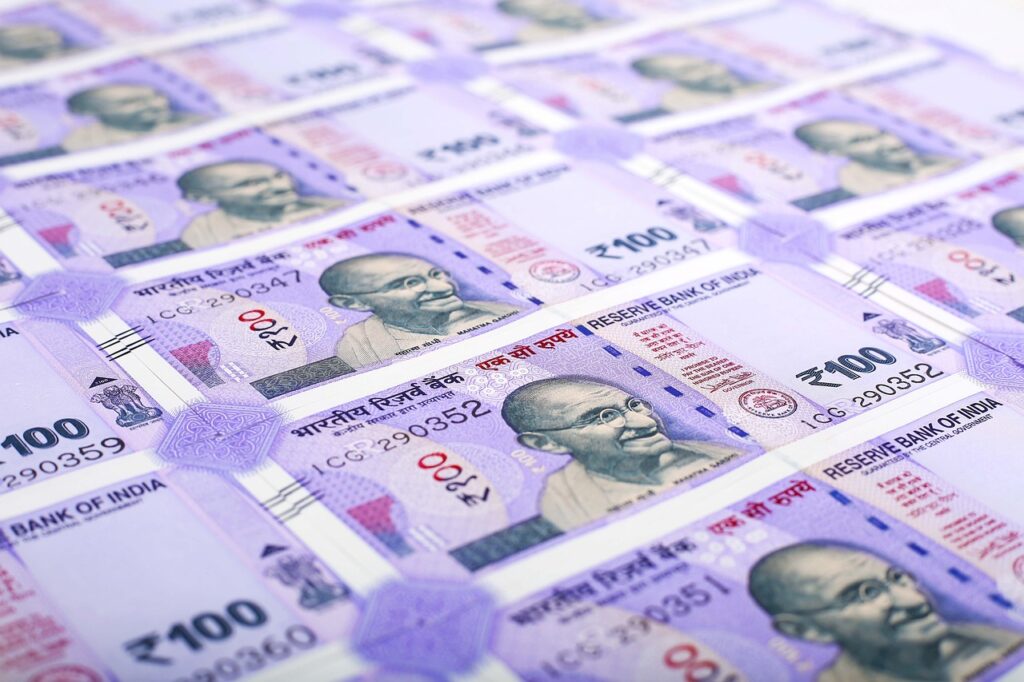
India as an emerging force seeking greater hegemony by 2050
India is emerging as an increasingly important player on the world stage. At the end of 2022, it surpassed Great Britain and became the fifth largest economy in the world by GDP and the third largest by purchasing power, according to Deutsche Welle – a German public news network – which, according to macroeconomic forecasts from the IMF , anticipates that by 2030 it will have surpassed the economies of Germany and Japan.
In addition to the notable rate of economic growth that refers to the Chinese rise, it is important to highlight some aspects of Indian society that collaborate with its advantages: among the 1.4 billion inhabitants, there is a vast qualified workforce, young, dedicated to the best-known national projects, such as the development of the pharmaceutical, technology and energy industries.
The Indian domestic market has also represented an even greater force in the economic sector. Due to the positive trend in the birth rate, a growing economically active population is supplying significant volumes of a higher than Chinese domestic demand. This is generating a large movement of resources.
Still, the prospect of progressive government investment in infrastructure and energy industry, especially renewable, represents a favorable outlook for the Indian economy, especially when compared to its biggest competitor in the region, China, which is dealing with an aging population. (demonstrating the negative consequences of birth control policies that were recently abandoned).
Furthermore, with the rise in Chinese average wages, there has been an increase in the general cost of production of Chinese manufactures, which still dominate the global market, even observing Indian industrial expansion.
New Delhi’s “Make in India” initiative has boosted local smartphone production in India, attracting the making of new Apple products such as high-end iPhones and other tech companies such as Samsung and Xiaomi.
This expansion is driven by growing domestic demand and the need to reduce dependence on imports, contributing to the country’s economic and technological development with foreign investment and the creation of local jobs.
This increase in the local production of foreign products is also part of a policy of large multinationals to diversify their production chains beyond China to reduce the “Beijing risk,” an industrial strategy also called “China + 1.”
Given this scenario, one can understand the emergence of opportunities for India to gain more space in global value chains by attracting manufacturing industries to its territory and, as it expands its infrastructure, the country can continue to invest in the pharmaceutical and energy – above all when noting the deceleration of Chinese growth.
However, Indian growth cannot be analyzed only by economic performance, it is also necessary to consider the geopolitical aspects that can lead to social developments in New Delhi.
The Indian role in the Indo-Pacific facing the Chinese presence
When it comes to India’s international relations, it is important to highlight that its formal representation on the global stage has been criticized due to the lack of investment in the Indian diplomatic service and the limited presence of representatives, which has made it difficult to solve chronic problems.
However, Indian Foreign Policy follows some traditional pillars that must be pointed out, as they continue to be parameters for defining New Delhi’s projection in the Indo-Pacific region. They are:
- maintain the non-alignment with great powers, observed since its independence;
- expand the country’s commercial relations to the maximum, valuing pragmatism and not ideology;
- favor dialogue with less relevant actors, not just regional or global powers;
- while trying to remain non-aligned, the country has played an active role in Quad discussions and sees the initiative as a way to increase its regional and global influence.
With this in mind, India does not seem to want to break its “non-alignment” posture, even in the face of tensions between the West and the East, as it is still dependent on Russia for energy resources, defense materials, as well as fertilizers.
Despite this, there is a closer relationship between New Delhi and the West, given the recognition of the strategic importance of the South China Sea, the Strait of Malacca, which are progressively under greater tension due to disputes between China and the United States for greater influence. in the region.
India arrives in 2023 aiming to project itself over the Indo-Pacific still without solving crucial problems: how to deal with Chinese border disputes, given that Sino-Indian relations have deteriorated in recent years and corruption, which undermines the economic and social development of the country.
There is also the problem of the troubled relations with its neighbor Pakistan, which is marked by historical conflicts, especially in relation to the territorial conflict over the Kashmir region, making it one of the longest and most intense disputes in Asia.
However, New Delhi approached the USA in the strategic alignment QUAD (alliance composed of Japan, Australia, India and USA) aiming to counterbalance Beijing’s influence in the region, but it still participates in the Shanghai Cooperation Organization and is part of the BRICS, even that is at odds with China.
India’s dubious position between the US and Russia in the Ukraine war
Since the beginning of the Ukrainian War, India has tried not to position itself biased towards either side, while practicing diplomatic juggling to maintain good relations with both Russia and the United States.
Indian relations with Russia are indispensable in view of the lack of natural resources within Indian territory. As an energy partner of India, Russia stands out for selling its oil using rubles and rupees, circumventing international sanctions.
Furthermore, New Delhi has been a traditional importer of Soviet and later Russian armaments since the 1960s. This relationship was strengthened by political and ideological ties between India and the Soviet Union that developed during the Cold War.
After the dissolution of the Soviet Union in 1991, Russia assumed the role of the main supplier of armaments to India, supplying the country with a wide range of equipment, from small arms to air defense systems and ballistic missiles.
At the same time, the country is striving to maintain friendly relations with the United States by condemning Russian advances in the ongoing conflict on Ukrainian territory. And, while circumventing Western sanctions against Russia, paradoxically, India is trying to participate in the same international sanctions against Moscow, albeit to a lesser extent.
Why is the greater Indian presence in the Indo-Pacific important for geopolitics?
Since the adoption of the “Belt and Road Initiative” strategy by Beijing, several Chinese investment focuses have emerged in road, rail and maritime infrastructure, in addition to promoting the industrial development of partner countries of the Asian superpower, so as to trigger an increase in demand for Chinese manufactures in these allied markets.
For example, China has invested significantly in Pakistan and Sri Lanka in recent decades as part of its initiative. These investments include major infrastructure projects such as the construction of the port of Gwadar in Pakistan and the port of Hambantota in Sri Lanka, as well as the construction of roads, railways and power plants.
This Chinese advance in the Indian neighborhood was also accompanied by an expansion of its naval fleet, which is increasingly present in the Indian and Pacific Oceans, from the South China Sea, passing through the Bay of Bengal, to the Arabian Sea and the Coast. East African, which limits the projection space desired by New Delhi.
In this sense, it can be observed that Indian naval plans are inserted in the broad global geopolitics, which is aligned with the North American strategy of containing the Chinese area of influence, having as its own goals to guarantee a space to project itself in this field as well. board that concentrates most of the world’s maritime trade.
That said, it is important to monitor QUAD summits and naval exercises to understand their plans and whether this action could generate further tensions between these actors. Therefore, the trend for dubious Indian foreign policy is still one of “non-alignment”, or “independent policy” as Indian officials have recently termed it.
Finally, it is possible that India will continue to negotiate with both (Russia and the United States), according to its interests and benefits, until it is pressured in a more incisive way to give up one of the partnerships. Furthermore, India has sought to counterbalance China’s growing power in the region, both militarily and economically.
However, with the great growth of the economy, population (it has already passed the Chinese), and Indian influence, this New Delhi game of balance between alliances of convenience and open non-alignment with great powers may be changed in the not too distant future. The next chapters in the Indo-Pacific region will certainly be interesting.
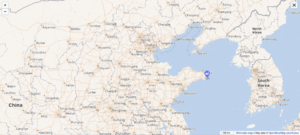

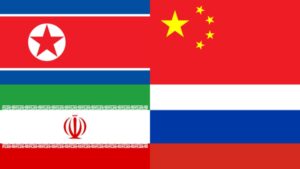
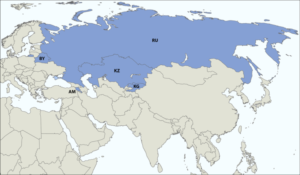

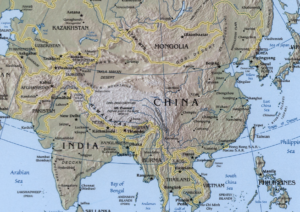






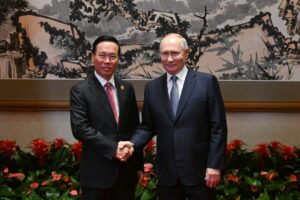
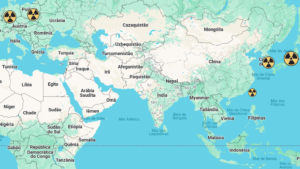
[…] and South Korea has the potential to play a significant role in the geopolitical dynamics of the Indo-Pacific region, affecting both US and Chinese […]
[…] India and Iran, by establishing an ambitious pact, not only reshaped the region’s trade routes, but also laid the foundation for a possible new geopolitical order in Asia. […]
[…] The dispute over the Siliguri Corridor presents geopolitical risks that have implications not only for India and China but for the entire South Asian region. […]
[…] to Indian Dominance: CPEC’s geographic proximity to India has significant geopolitical implications. India considers parts of CPEC to be part of its […]